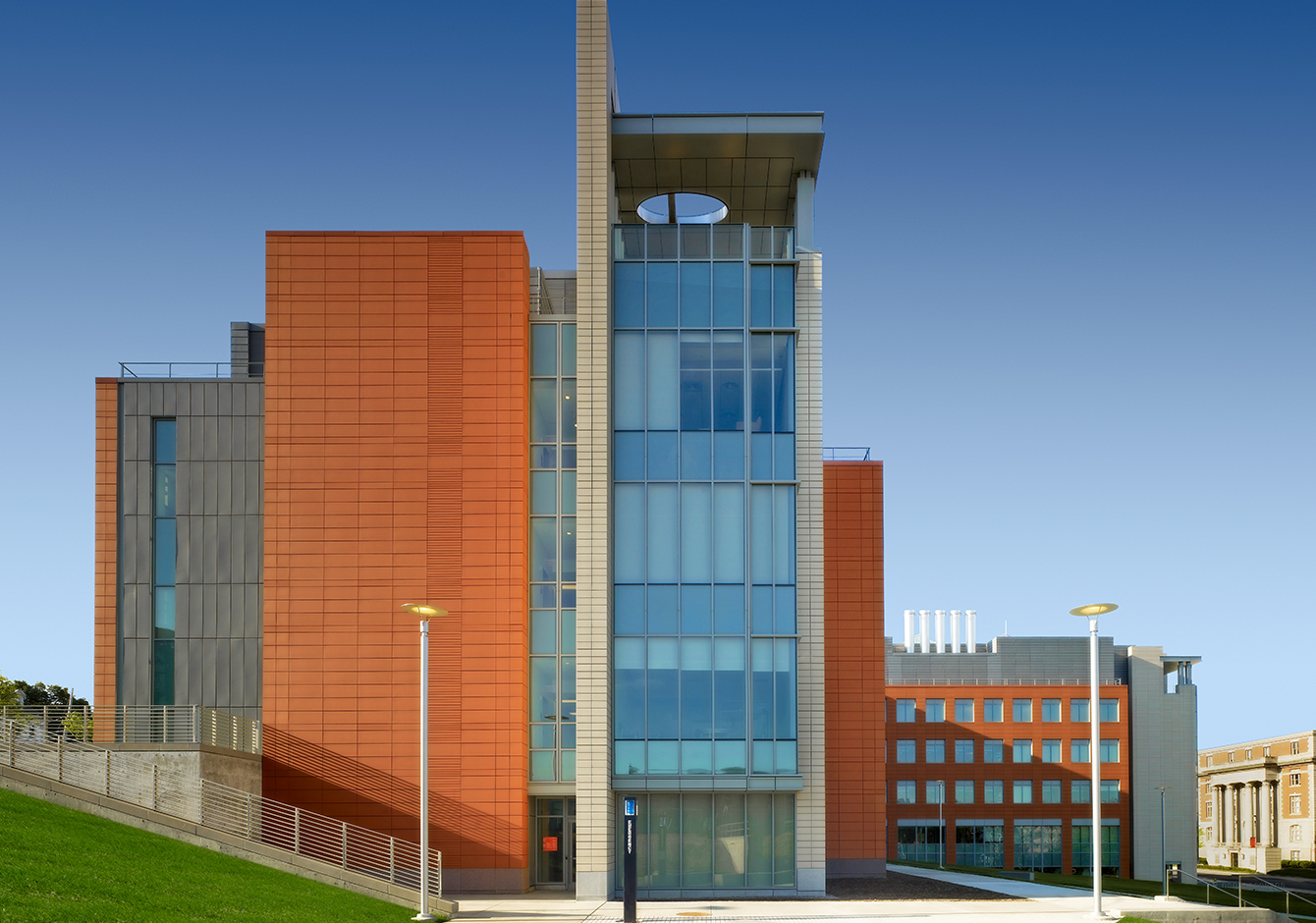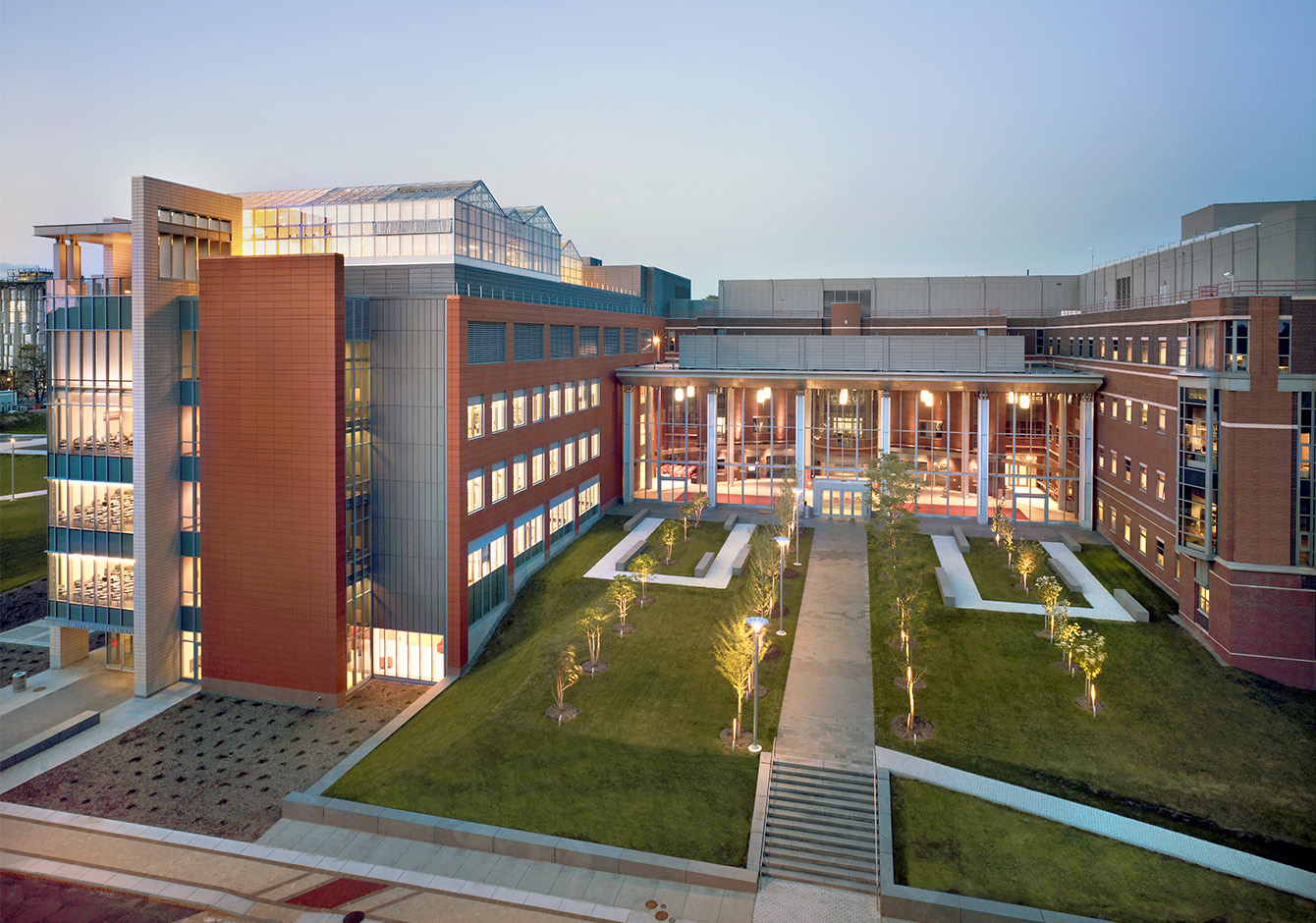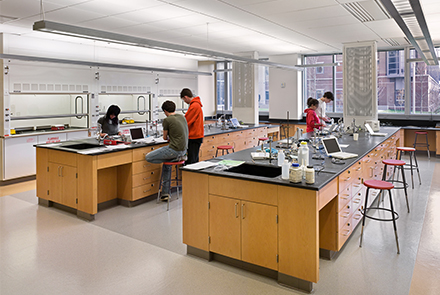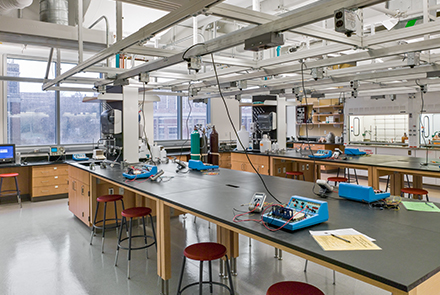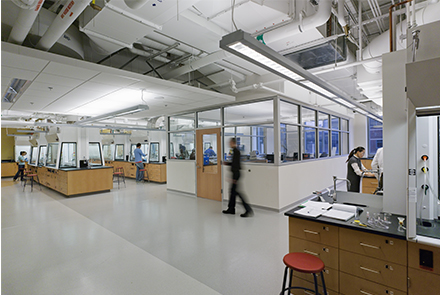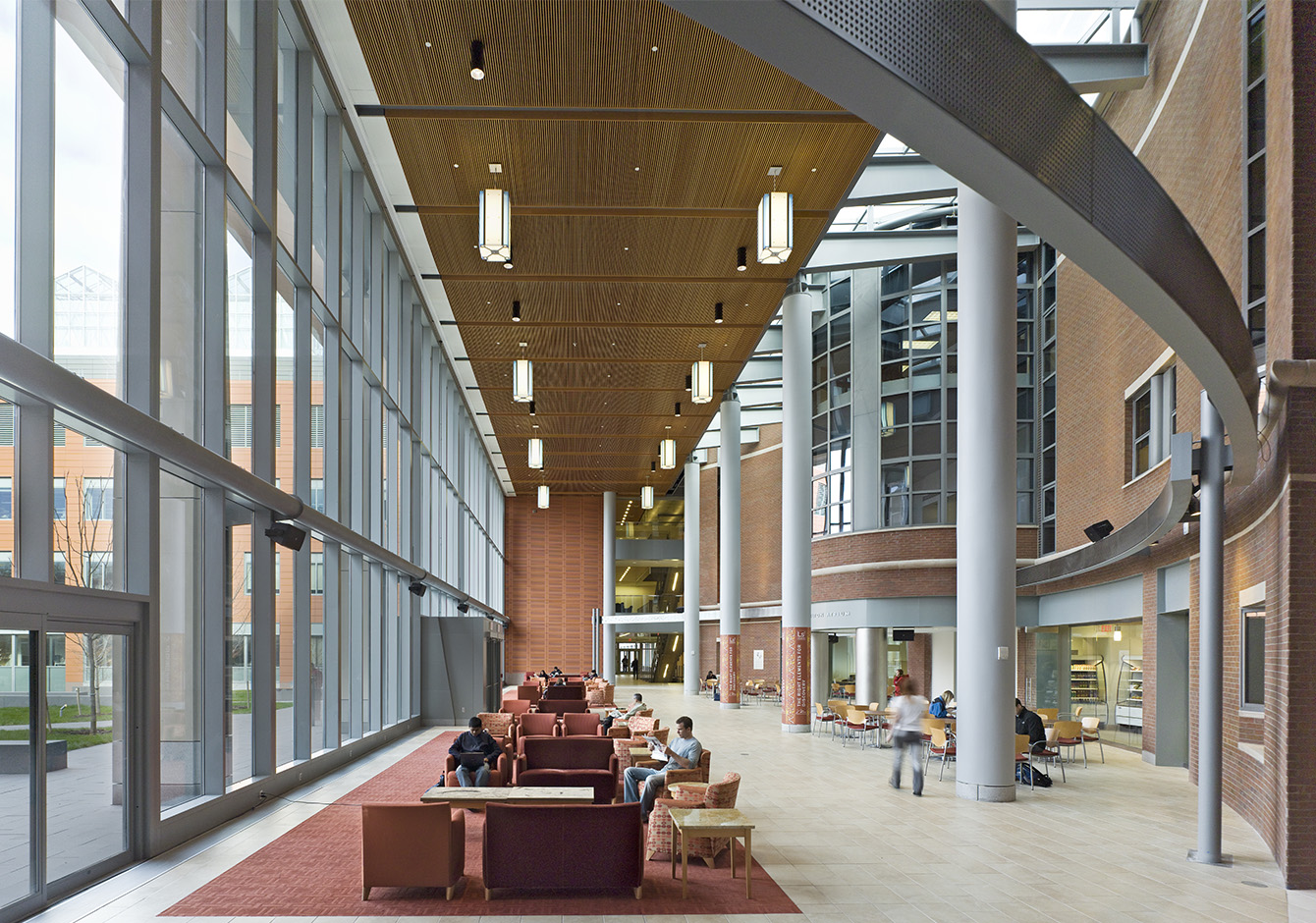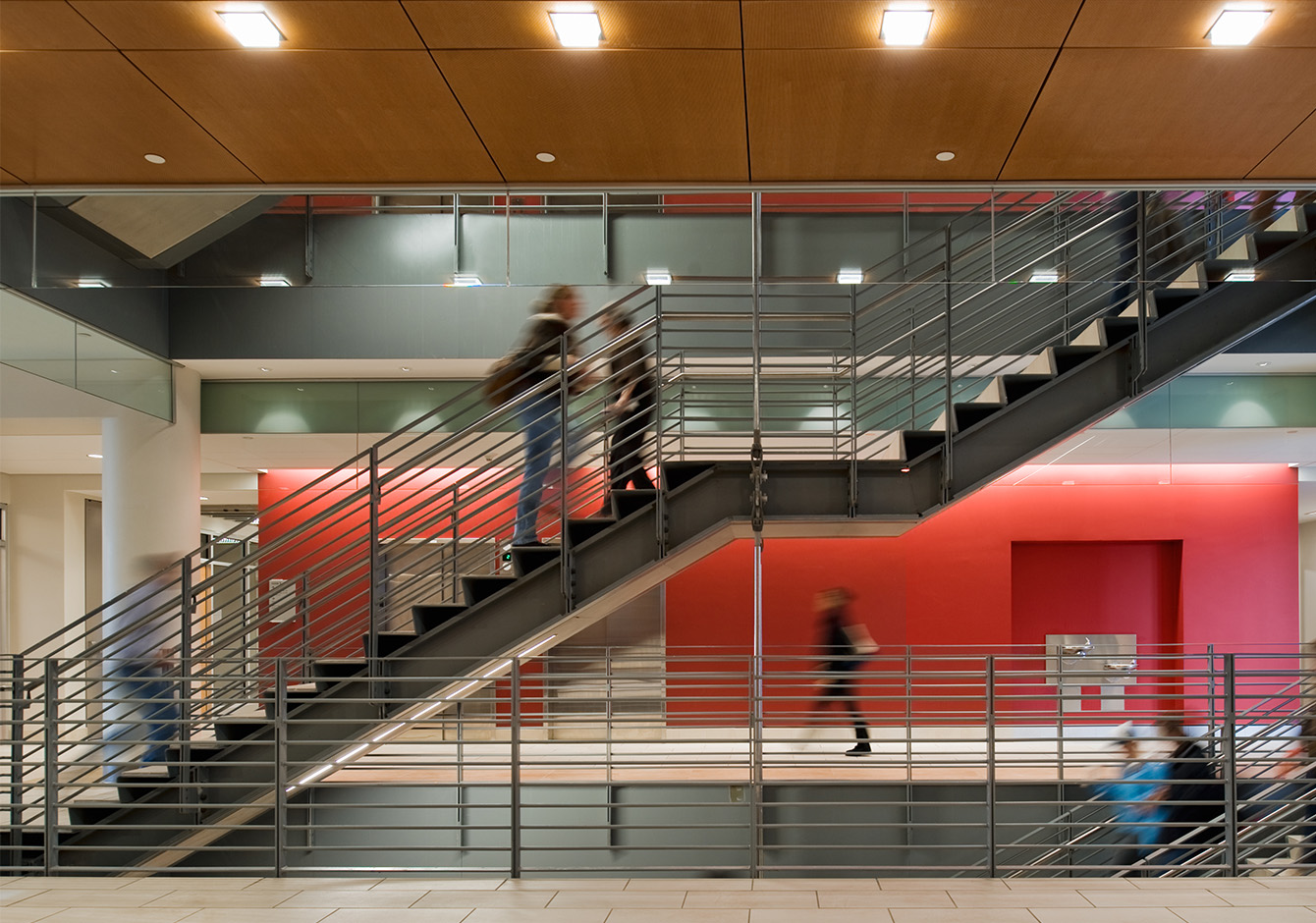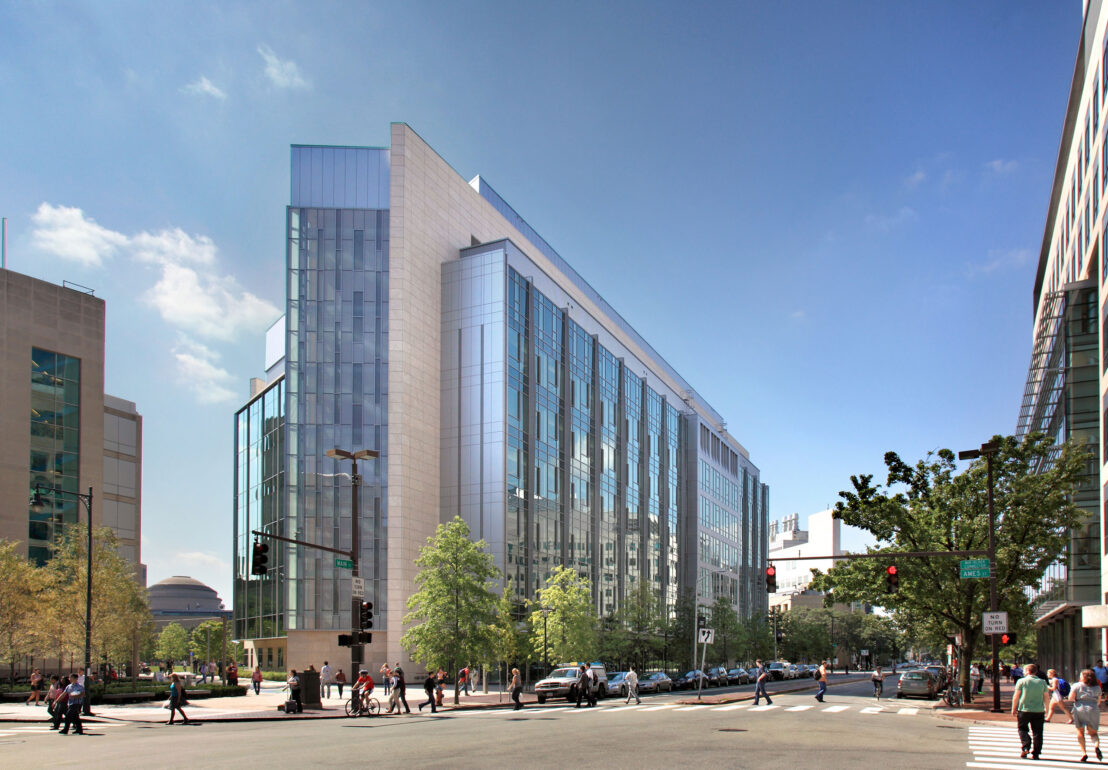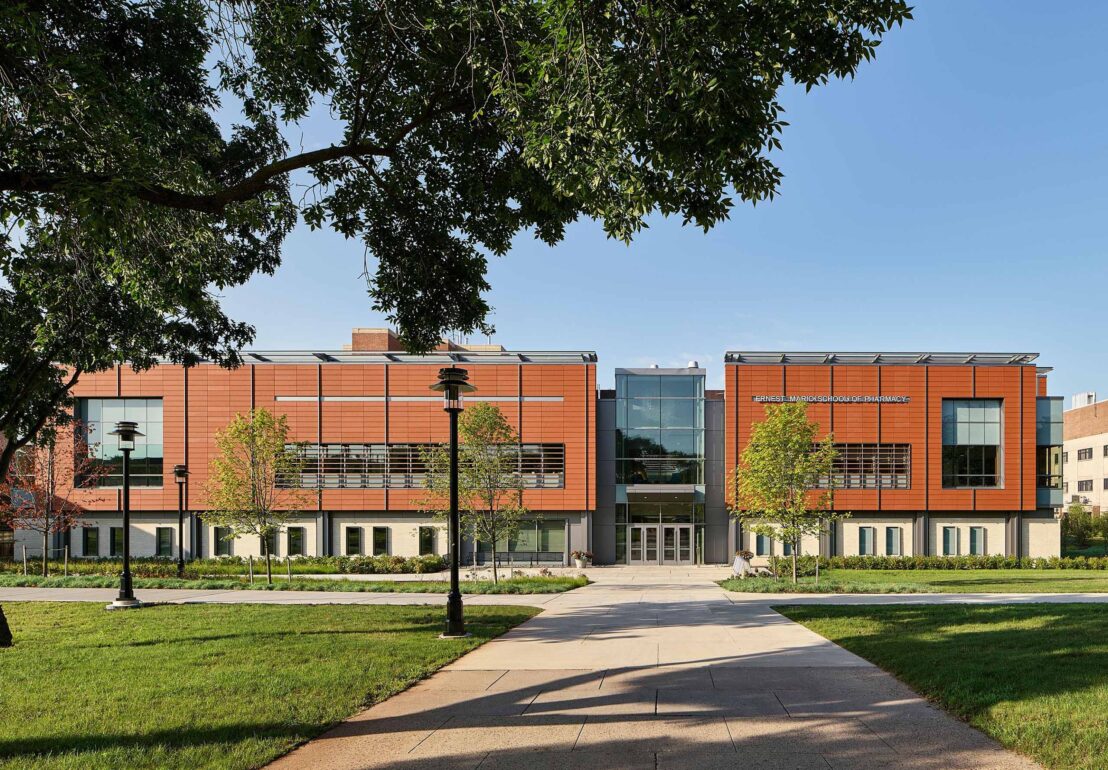The teaching wing provides modular Biology and Chemistry teaching laboratories, organized on four floors, which maximizes student/faculty interaction. Biology teaching laboratories are organized on the same floors and across the corridor from Chemistry teaching laboratories to facilitate interdisciplinary collaboration in teaching. This organization allows sharing of support spaces, facilitating the development of interdisciplinary majors such as the Biochemistry program.
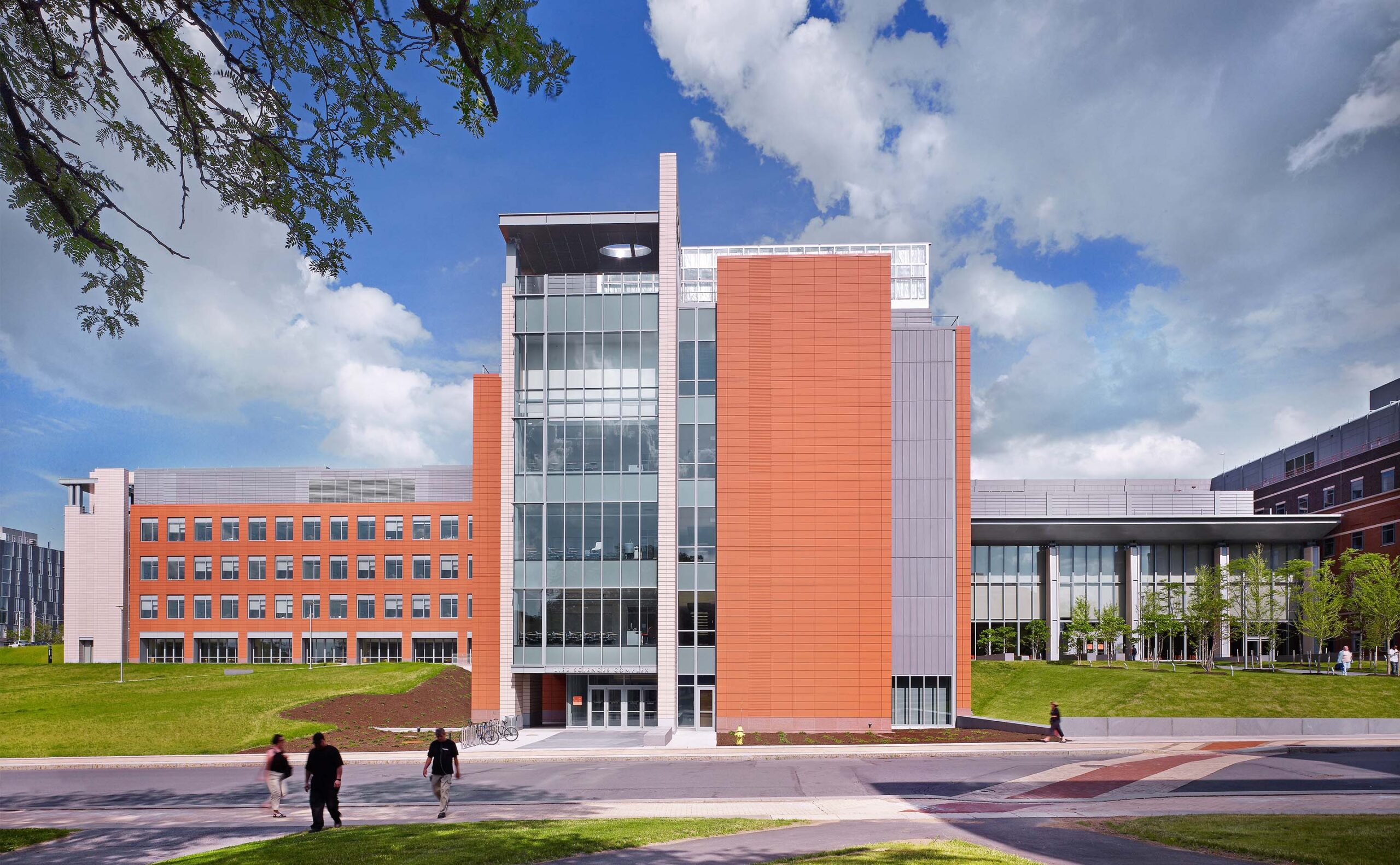
Syracuse University
Life Sciences Complex
Syracuse, New York
Size
235,000 gsf
Services
Programming
Lab Planning and Design
Architecture
Awards
New York State Energy Research and Development Authority: High Performance Building Plaque
The Life Sciences Complex unifies the research and teaching facilities of the Biology Department and provides Chemistry Department teaching facilities with a new home adjacent to existing Chemistry research facilities. The Complex is the key component of Syracuse University’s initiative to improve teaching and research facilities for the Natural Sciences and Mathematics Division of the College of Arts and Sciences, and facilitates the interdisciplinary collaboration integral to today’s Life Sciences.
Organized in two wings, one for research and one for teaching, the new Life Sciences Complex provides research laboratories for Molecular and Cellular Biology and teaching laboratories for the Departments of Biology and Chemistry. Various lab support facilities, such as a greenhouse, plant growth facility, and future vivarium (fully designed, constructed as shell space), are also housed in the building, as are campus-wide classroom and lecture facilities, faculty offices, departmental administrative offices, lounges, and common rooms.
The building exterior is designed to respond to the historic Syracuse campus context while acknowledging the future-oriented research and teaching taking place inside the building. Materials – brick, metal, glass – are compatible with the campus context and in keeping with the University’s Master Plan.
